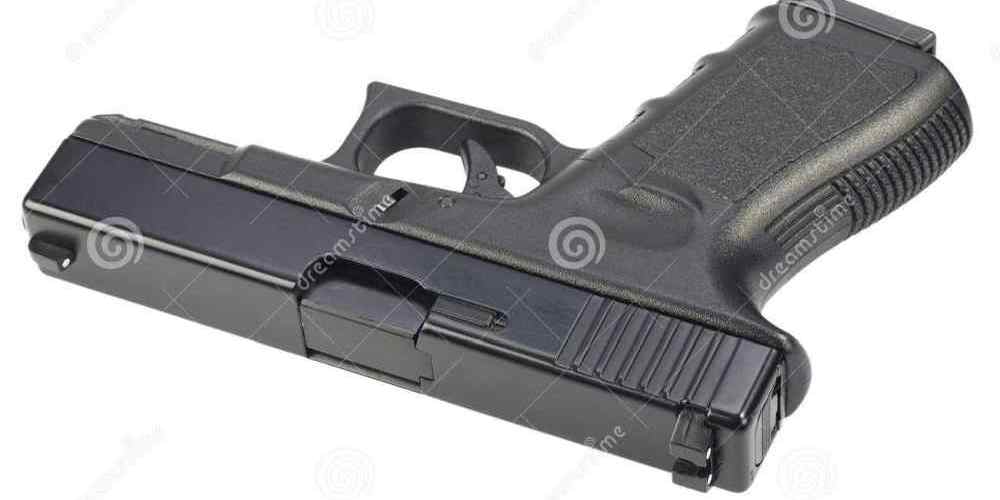“Unleashing the power of precision with every shot.”
Importance of Understanding Terminal Ballistics in Handgun Ammunition
When it comes to choosing the right handgun ammunition, understanding terminal ballistics is essential. Terminal ballistics refers to the behavior of a bullet once it hits its target, including penetration, expansion, and energy transfer. This knowledge is crucial for ensuring that your ammunition performs as expected in self-defense or hunting situations.
One of the most important factors in terminal ballistics is penetration. Penetration refers to how far a bullet can travel through a target before coming to a stop. In self-defense scenarios, adequate penetration is critical for stopping an attacker effectively. If a bullet does not penetrate deep enough, it may fail to reach vital organs and stop the threat.
Another key aspect of terminal ballistics is expansion. When a bullet strikes a target, it may expand or deform, creating a larger wound cavity. Expanded bullets can cause more damage to tissue and increase the likelihood of incapacitating an attacker quickly. Ammunition designed for self-defense purposes often features hollow-point or expanding bullets to maximize expansion upon impact.
Energy transfer is also an important consideration in terminal ballistics. When a bullet strikes a target, it transfers kinetic energy, causing damage to tissue and organs. Bullets with higher energy transfer can create more devastating wounds and increase the likelihood of stopping an attacker effectively. Understanding energy transfer can help you choose ammunition that delivers the desired level of stopping power.
In addition to penetration, expansion, and energy transfer, terminal ballistics also involves factors such as bullet design, velocity, and caliber. Different types of bullets, such as full metal jacket or hollow-point rounds, exhibit varying performance characteristics when it comes to terminal ballistics. Bullet velocity plays a role in how much energy is transferred upon impact, while caliber affects penetration and expansion capabilities.
By understanding terminal ballistics in handgun ammunition, you can make informed decisions when selecting ammunition for self-defense or hunting purposes. Choosing ammunition that offers reliable performance in terms of penetration, expansion, and energy transfer can increase your chances of stopping a threat effectively.
In conclusion, understanding terminal ballistics in handgun ammunition is crucial for ensuring that your ammunition performs as expected in self-defense or hunting situations. Factors such as penetration, expansion, and energy transfer play a significant role in determining the effectiveness of a bullet upon impact. By considering these factors and selecting ammunition that offers reliable performance characteristics, you can increase your chances of stopping a threat effectively. Take the time to educate yourself on terminal ballistics and make informed decisions when choosing handgun ammunition for your personal protection needs.
Factors Affecting Terminal Ballistics in Handgun Ammunition
Terminal ballistics is a crucial aspect of understanding handgun ammunition. It refers to the behavior of a bullet upon impact with a target, including factors such as penetration depth, expansion, and energy transfer. Several factors can affect terminal ballistics in handgun ammunition, each playing a significant role in determining the effectiveness of a particular round.

One of the most important factors affecting terminal ballistics is bullet design. The shape and construction of a bullet can have a significant impact on its performance upon impact. Hollow point bullets, for example, are designed to expand upon hitting a target, creating a larger wound channel and transferring more energy to the target. Full metal jacket bullets, on the other hand, are designed for penetration and are less likely to expand upon impact.
Another critical factor that influences terminal ballistics is velocity. The speed at which a bullet travels can affect its ability to penetrate and expand upon impact. Higher velocity rounds tend to have better terminal performance, as they can create more damage upon hitting a target. However, excessive velocity can also cause over-penetration, which may reduce the effectiveness of the round.
Bullet weight is also an essential factor in terminal ballistics. Heavier bullets tend to penetrate deeper and create larger wound channels upon impact. However, lighter bullets may travel faster and expand more effectively, depending on their design. The weight of the bullet must be carefully considered when selecting handgun ammunition for self-defense or hunting purposes.
The type of firearm used can also influence terminal ballistics. Different handguns have varying barrel lengths and rifling patterns, which can affect the velocity and stability of a bullet as it travels downrange. Additionally, the type of ammunition used in a particular firearm can impact its terminal performance. Some handguns may be more compatible with certain types of ammunition, leading to better terminal ballistics.
Environmental factors such as temperature and humidity can also play a role in terminal ballistics. Extreme temperatures can affect the performance of handgun ammunition, altering factors such as velocity and expansion upon impact. Humidity levels can also impact the reliability and effectiveness of handgun rounds, making it essential to consider these factors when choosing ammunition for use in different environments.
Overall, understanding terminal ballistics in handgun ammunition requires careful consideration of several factors that can influence the performance of a round upon impact. Bullet design, velocity, weight, firearm type, and environmental conditions all play critical roles in determining how effective a particular round will be in a self-defense or hunting scenario. By taking these factors into account when selecting handgun ammunition, shooters can ensure they are using rounds that will perform optimally in any situation.
Terminal Ballistics Testing Methods for Handgun Ammunition
Terminal ballistics refers to the study of how a projectile behaves upon impact with a target. When it comes to handgun ammunition, understanding terminal ballistics is crucial for ensuring the effectiveness and performance of the ammunition in real-world scenarios. In order to test and evaluate the terminal ballistics of handgun ammunition, various testing methods are employed.
One common method used to test terminal ballistics in handgun ammunition is the gelatin block test. Gelatin blocks are often used as a substitute for human tissue in ballistic testing due to their similar density and consistency. By firing a round into a gelatin block and measuring the depth and diameter of the wound cavity created by the projectile, researchers can gain valuable insights into the terminal performance of the ammunition.
Another popular testing method for terminal ballistics in handgun ammunition is the water jug test. In this test, a projectile is fired into a series of water-filled jugs, and the expansion and fragmentation of the bullet are observed. The number of jugs penetrated by the projectile can also provide valuable information about the penetration capabilities of the ammunition.
One important consideration when testing terminal ballistics in handgun ammunition is shot placement. The location where a bullet strikes a target can have a significant impact on its terminal performance. For example, hitting vital organs such as the heart or lungs can result in more rapid incapacitation than hitting non-vital areas.
In addition to shot placement, bullet design also plays a crucial role in terminal ballistics. Hollow point bullets, for example, are designed to expand upon impact with a target, creating a larger wound cavity and increasing the likelihood of stopping an attacker quickly. Full metal jacket bullets, on the other hand, are designed to penetrate deeply without expanding, making them ideal for use against hard targets.
The velocity at which a projectile travels also affects its terminal performance. Higher velocities can lead to greater energy transfer upon impact, resulting in more tissue damage and potentially quicker incapacitation. However, higher velocities can also increase the risk of over-penetration, where a bullet passes completely through a target without depositing all of its energy.
In conclusion, understanding terminal ballistics in handgun ammunition is essential for evaluating the effectiveness and performance of different types of ammunition in real-world situations. By using various testing methods such as gelatin block tests and water jug tests, researchers can gain valuable insights into how different rounds perform upon impact with a target. Factors such as shot placement, bullet design, and velocity all play important roles in determining the terminal performance of handgun ammunition. By taking these factors into account when selecting ammunition for self-defense or other purposes, individuals can ensure that they are using rounds that are both effective and reliable in critical situations.
Terminal Ballistics Performance of Popular Handgun Ammunition Brands
When it comes to choosing the right handgun ammunition, understanding terminal ballistics is crucial. Terminal ballistics refers to the behavior of a projectile once it hits its target. This includes factors such as penetration depth, expansion, and energy transfer. In this article, we will explore the terminal ballistics performance of popular handgun ammunition brands to help you make an informed decision.
One of the most important factors to consider when evaluating terminal ballistics is penetration depth. This refers to how far a bullet can travel through tissue after impact. A bullet that penetrates too shallow may not reach vital organs, while one that penetrates too deep may over-penetrate and pose a risk to bystanders. Popular handgun ammunition brands such as Federal Premium and Hornady are known for their ability to deliver consistent penetration depths, making them reliable choices for self-defense scenarios.
Expansion is another key aspect of terminal ballistics. When a bullet impacts a target, it should expand to create a larger wound cavity, increasing the chances of hitting vital organs and stopping the threat effectively. Ammunition brands like Winchester and Speer are renowned for their ability to reliably expand upon impact, making them popular choices among law enforcement agencies and civilian shooters alike.
Energy transfer is also an important consideration in terminal ballistics. This refers to the amount of kinetic energy that is transferred from the bullet to the target upon impact. A bullet that transfers a significant amount of energy can cause more tissue damage and incapacitate the threat more effectively. Brands like Remington and Sig Sauer are known for their high-energy transfer capabilities, making them top contenders in the world of handgun ammunition.
When evaluating terminal ballistics performance, it’s important to consider not only individual brands but also specific ammunition types within those brands. For example, Federal Premium’s HST line is highly regarded for its consistent expansion and penetration depths, making it a favorite among concealed carry permit holders. Similarly, Hornady’s Critical Defense line is known for its reliable expansion and energy transfer, making it a popular choice for home defense scenarios.
In conclusion, understanding terminal ballistics is essential when selecting handgun ammunition. Factors such as penetration depth, expansion, and energy transfer all play a crucial role in determining how effective a bullet will be at stopping a threat. By choosing popular handgun ammunition brands that excel in these areas, you can ensure that you are well-equipped to defend yourself in any situation. Whether you prefer Federal Premium’s HST line or Hornady’s Critical Defense line, rest assured that you are choosing ammunition that has been rigorously tested and proven to deliver outstanding terminal ballistics performance.
How to Choose the Right Handgun Ammunition for Terminal Ballistics
Understanding Terminal Ballistics in Handgun Ammunition
When it comes to choosing the right handgun ammunition for self-defense or hunting purposes, understanding terminal ballistics is crucial. Terminal ballistics refers to what happens to a projectile when it strikes a target. This includes factors such as penetration, expansion, and energy transfer. By understanding these concepts, you can make an informed decision on which handgun ammunition is best suited for your needs.
Penetration is one of the most important factors to consider when selecting handgun ammunition. Penetration refers to how deeply a bullet can travel through a target before coming to a stop. In self-defense situations, adequate penetration is essential to ensure that the bullet reaches vital organs and stops the threat effectively. On the other hand, in hunting scenarios, over-penetration can result in wasted energy and reduced stopping power.
Expansion is another critical aspect of terminal ballistics. Expansion refers to how much a bullet expands upon impact with a target. A bullet that expands properly can create a larger wound cavity, increasing the chances of hitting vital organs and stopping the threat quickly. Over-expansion, however, can result in reduced penetration and less effective stopping power.
Energy transfer is also an important consideration when choosing handgun ammunition. Energy transfer refers to how much energy from the bullet is transferred to the target upon impact. A bullet with high energy transfer can cause significant tissue damage and incapacitate the threat more effectively. However, bullets with low energy transfer may not be as effective at stopping a threat quickly.
To choose the right handgun ammunition for terminal ballistics, it’s essential to consider your specific needs and preferences. For self-defense purposes, hollow point ammunition is often recommended due to its ability to expand upon impact and create larger wound cavities. This type of ammunition is designed to transfer energy more effectively and reduce the risk of over-penetration.
For hunting purposes, expanding bullets are commonly used to ensure quick and humane kills. These bullets are designed to expand upon impact with game animals, creating larger wound cavities and increasing the chances of hitting vital organs. This results in quicker kills and reduces the risk of wounded animals escaping.
When selecting handgun ammunition for terminal ballistics, it’s also important to consider factors such as caliber, bullet weight, and muzzle velocity. These factors can impact penetration, expansion, and energy transfer, so it’s essential to choose ammunition that is well-suited for your specific firearm and intended use.
In conclusion, understanding terminal ballistics is essential when choosing handgun ammunition for self-defense or hunting purposes. By considering factors such as penetration, expansion, and energy transfer, you can make an informed decision on which ammunition is best suited for your needs. Whether you’re looking for self-defense ammunition or hunting ammo, taking the time to understand terminal ballistics will help you select the right handgun ammunition for your specific requirements.






